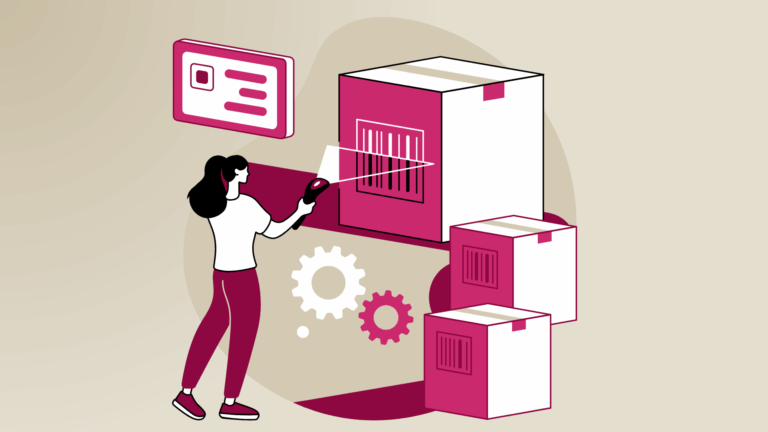
SaaS or On-Premise WMS: Which Model Is Right for Your Warehouse?

When implementing a warehouse management system (WMS), the first question that usually arises is which deployment model to choose. Once that decision is made, another dilemma follows: should you deploy your WMS in the cloud (SaaS) or install it on your own servers (on-premise)?
There is no universal answer. Both options are valid and meet very different needs. Making the right choice is essential, as each model impacts not only your initial budget, but also operational flexibility, scalability, and supply chain security.
SaaS or on-premise WMS: a strategic decision
A SaaS (Software as a Service) WMS is cloud-hosted and runs on a subscription basis, allowing access from any location and device, while the vendor handles updates, security, and maintenance.
On the other hand, the on-premise model involves installing the WMS within the company’s own infrastructure. It requires a significant initial investment in licences, servers and technical resources, but offers complete control over the data and system architecture. Key selling points of the SaaS model:
- Rapid implementation: no need to install servers; configuration is simpler and go-live is faster.
- Lower upfront investment: infrastructure costs are replaced by a predictable monthly or annual subscription.
- Automatic updates: the vendor keeps the system current without interrupting your teams’ work.
- Built-in scalability: adding warehouses, users, or new features is quick and simple.
- Seamless integration: most SaaS WMS solutions are designed to connect easily with ERPs, TMSs, or other business systems.
Key advantages of the on-premise model
- Total control over infrastructure and data: particularly appreciated in sectors subject to strict regulations or high confidentiality requirements.
- Advanced customization: adapt the warehouse management software to your company’s specific needs and workflows.
In summary: the on-premise model prioritises control, while SaaS prioritises flexibility.
SaaS or on-premise WMS: which model is best suited to logistics?
The choice between SaaS and on-premise depends less on technology than on each company’s context. Companies with strong IT infrastructures and highly specific processes often choose on-premise solutions for their customization potential and full control.
Those that need flexibility, rapid implementation or the ability to adapt to changes in demand find SaaS a natural ally.
In multi-cloud environments, with distributed operations or customers requiring remote access, SaaS offers clear advantages. On the other hand, sectors subject to strict data storage regulations still consider on-premise installation to be a solid alternative.
Questions to ask
Although the advantages are obvious, some questions remain:
- Long-term cost: subscription or licence? Which option is more advantageous in the long term?
- Data security: how can you guarantee that sensitive information is truly protected?
- Service reliability: 24/7 availability, incident support, business continuity in the event of a failure or cyberattack?
- Sensitive sectors: certain industries, such as defence and aeronautics, remain reluctant to adopt the SaaS model.
- Vendor dependency: What are the contractual terms? How long is the commitment period and what performance guarantees are offered?
Our advice: assess your needs before choosing
Before deciding how to implement a WMS, it is important to analyse the situation in depth:
- What are the growth forecasts for the coming years?
- What level of customisation do my processes require?
- Do I have an IT team available to maintain the infrastructure?
- How important is remote access in my daily work?
Answering these questions will help you make an informed decision and avoid costly mistakes.
Our ACSEP consultants will help you assess your situation and recommend the most appropriate option, whether it’s a SaaS, on-premise or hybrid model, such as on-premise software hosted by us, also known as the Cloud. Because it’s not just about deciding where to host the software, but also how to make your supply chain more agile, efficient and competitive.
For example, our IzyPro WMS is available in SaaS, on-premise or Cloud mode, depending on each customer’s needs, and is complemented by numerous services: 24/7 SLA, redundant architecture, disaster recovery plans (DRP) and custom developments.
On the other hand, IzyOne, our standard WMS, with no long-term commitment and at a very competitive cost, is available exclusively in SaaS, offering an agile and economical solution for companies looking to quickly digitise their warehouse.
Conclusion
SaaS is not a passing trend, but a real evolution in the design of logistics information systems. More flexible, faster and, in many cases, more economical, it meets the needs of many businesses.
Like any strategic decision, it must be analysed in relation to your business, your constraints and your objectives. The right support, a thorough needs analysis, and careful vendor selection make the difference between a successful project and an ill-fitting solution.



